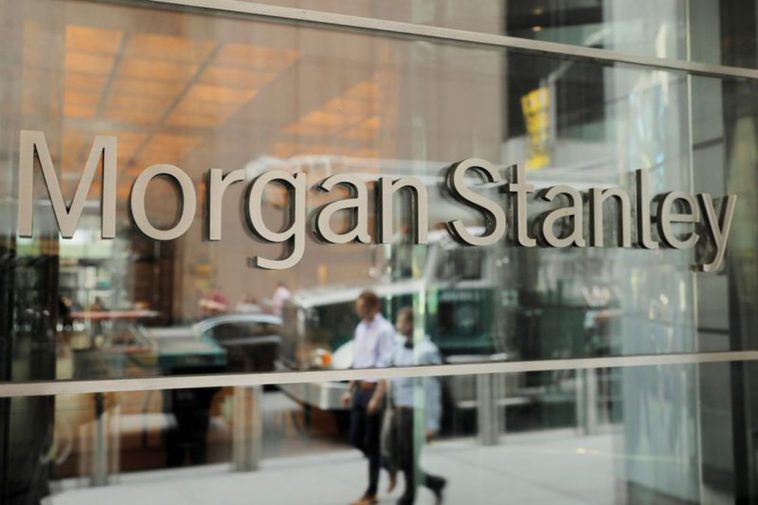Why fund managers are betting on direct indexing
/cloudfront-us-east-1.images.arcpublishing.com/tgam/WTDRDWIF3FOPFD4I5GT3LLVNQ4.JPG)
Late last year, Morgan Stanley bought Eaton Vance Corp. and its subsidiary Parametric Portfolio Associates LLC, which manages more than US$300-billion and is the largest player in the direct indexing market. REUTERS/Lucas Jackson
Lucas Jackson/Reuters
In the past two decades, consumers have learned to love customization. Spotify playlists have supplanted CDs. Streaming video apps like Netflix are quickly doing the same to cable television. The question is whether this trend will hit the investment industry.
Small-time investors can always pick out a handful of individual stocks to bet on, of course. But for people looking for broad exposure, pre-packaged products such as mutual funds or exchange-traded funds (ETFs), have been basically the only game in town.
These investment funds are fine for most people. However, another option is emerging that gives investors diversification as well as the ability to pick and mix their stock holdings as easily as they select burrito fillings at Chipotle.
So-called “direct indexing” products, which allow this sort of customization, are still in their nascent stage in the retail market. But a string of recent acquisitions suggests the fund management industry believes they will be a big growth area.
Direct indexing products are different from traditional funds because the end investor owns the individual stocks outright instead of holding shares or units in the investment vehicle. So, if retail investors wanted to obtain broad exposure to the U.S. market, they could choose a direct indexing product that gives them ownership of each of the individual stocks in the S&P 500, or a fraction of each share.
The key, though, is customization. For example, if retail investors wanted to have S&P 500 exposure but not hold gun stocks, they could exclude them. Or, if investors already held a large position in a single company, perhaps because of stock-based pay, they could reduce exposure to its shares in the direct indexing product.
In the past, this form of fund management would’ve been available only to the wealthy who could afford to buy broad stock exposure directly.
Then, late last year, two Wall Street giants placed bets on mass-market offerings: BlackRock Inc. bought Aperio Group LLC, while Morgan Stanley bought Eaton Vance Corp. and its subsidiary Parametric Portfolio Associates LLC. Parametric, which manages more than US$300-billion, is the largest player in the direct indexing market by a wide margin. Aperio oversees about US$36-billion.
The deals were an “obvious acknowledgment that this is the wave of the future,” says Dave Nadig, chief investment officer and director of research at ETF Trends, an investment industry website.
On one hand, active asset managers may see direct indexing as a way of fighting back against the low-cost passive funds that have besieged the rest of the industry.
Thanks to new technology, fractional shares and commission-free trading, customizable funds are becoming much easier to roll out to the masses.
“With software, it’s trivial to maintain thousands of stock portfolios and rebalance them or put whatever spins you want on them,” Mr. Nadig says.
One of the other attractions of direct indexing funds is that they can help investors cut their taxes. Through a process known as “tax-loss harvesting,” direct indexers can systematically sell losing stocks and replace them with similar holdings. This allows investors to offset capital gains taxes incurred on their winning bets, while maintaining basically the same overall exposure.
Direct indexing also solves a tricky problem for sustainability-minded investors. There is no shortage of environmental, social and governance funds on the market, but investors and asset managers may not always agree on what counts as green or responsible. With direct indexing, investors do not have to go out and select a whole new fund, they can just drop and add whatever stocks they want.
“There are 1,000 different flavours of ice cream in the world of ESG investing,” says John Taft, vice-chairman of U.S. wealth manager Robert W. Baird & Co. Inc. “But the ability to screen portfolios to more fully reflect the values of the individual investor – technology enables that in a way that wasn’t possible before.”
The costs of the new products will be critical to how widely they are adopted. Current offerings are not as cheap as basic, vanilla ETFs that track a major index like the S&P 500, but they are more competitive against ETFs or funds that have a more strategy-based approach.
Mr. Nadig says that if investors want features such as ESG filters on stock selection or a particular investment style, such as a focus on undervalued companies, direct indexing tends to be cheaper than any packaged product.
There will be markets and asset classes where custom indexing does not make sense – for example, emerging markets and fixed income. Nevertheless, the challenge to traditional fund managers is clear.
© The Financial Times Limited 2021. All Rights Reserved. FT and Financial Times are trademarks of the Financial Times Ltd. Not to be redistributed, copied or modified in any way.
Published at Mon, 11 Jan 2021 09:45:00 +0000






Comments
Loading…